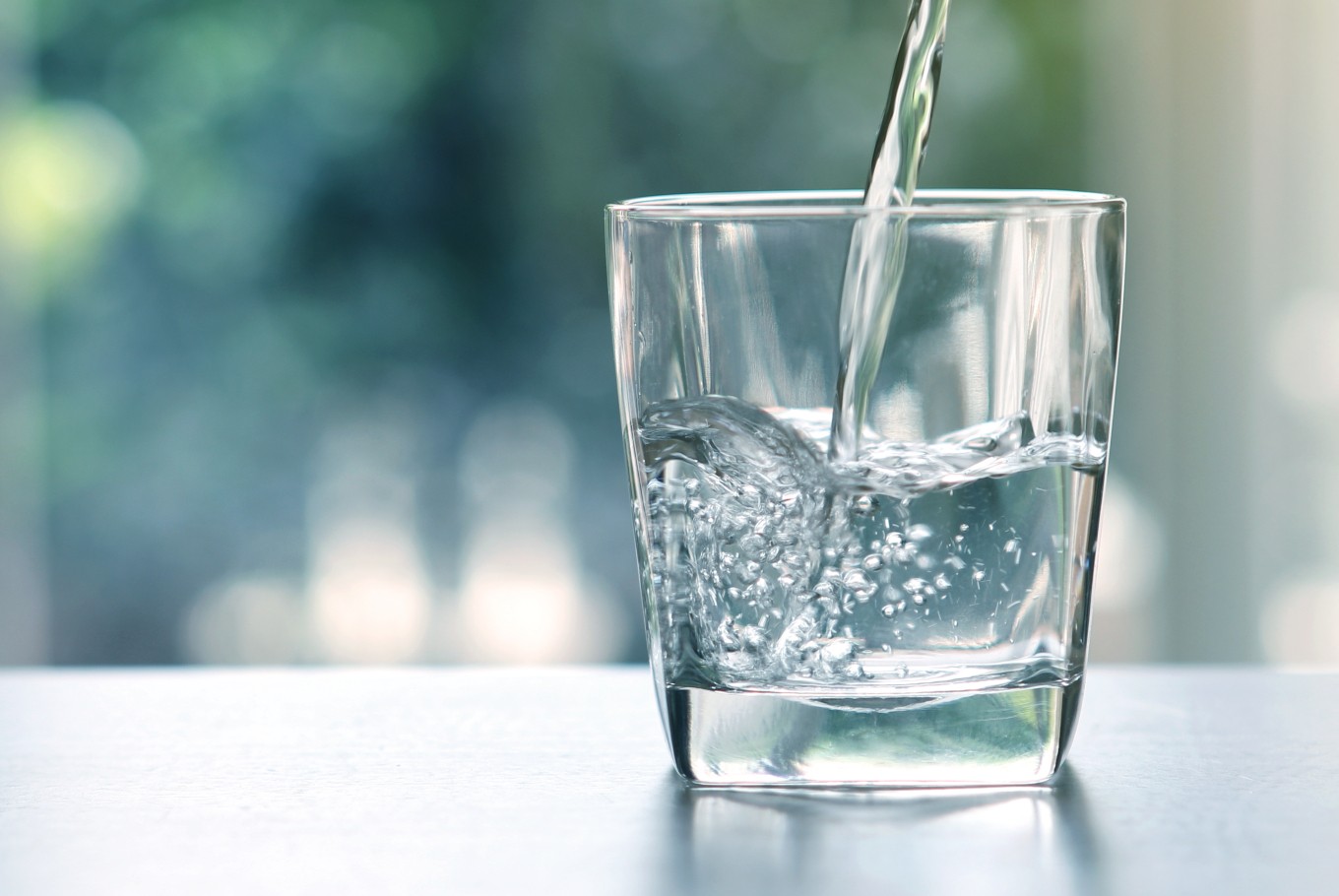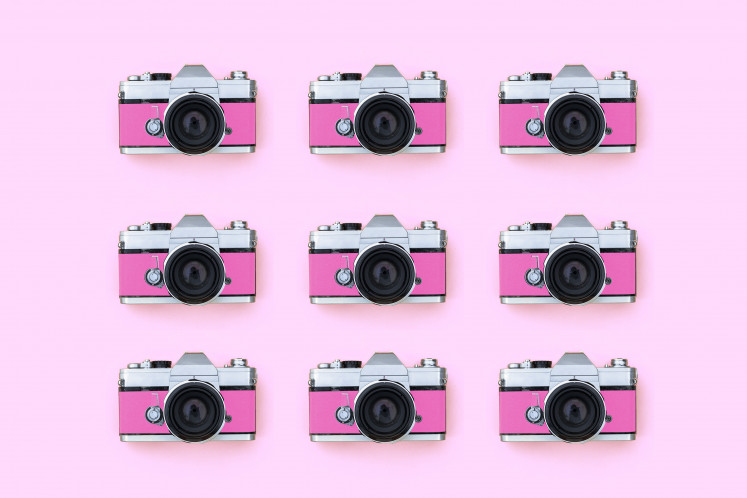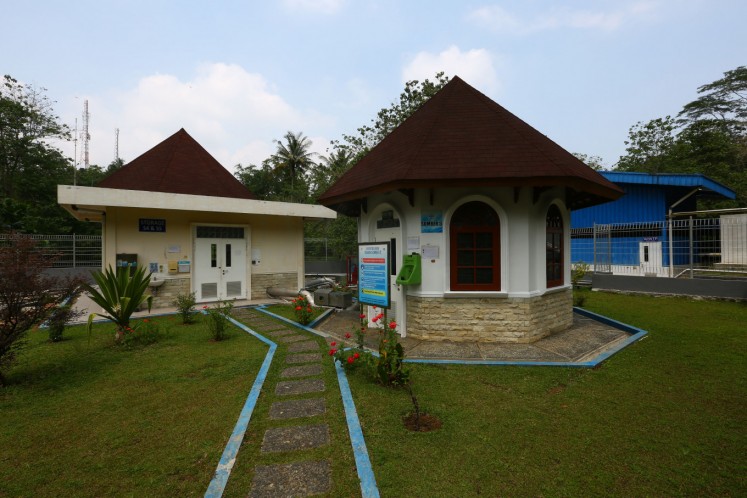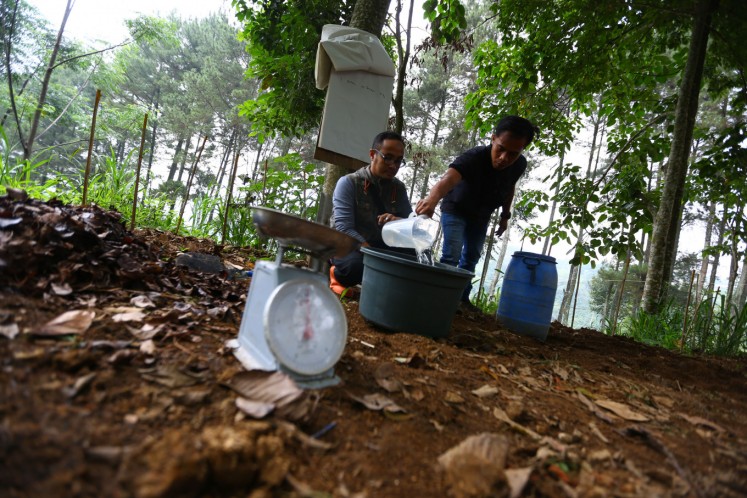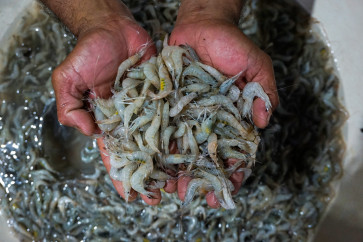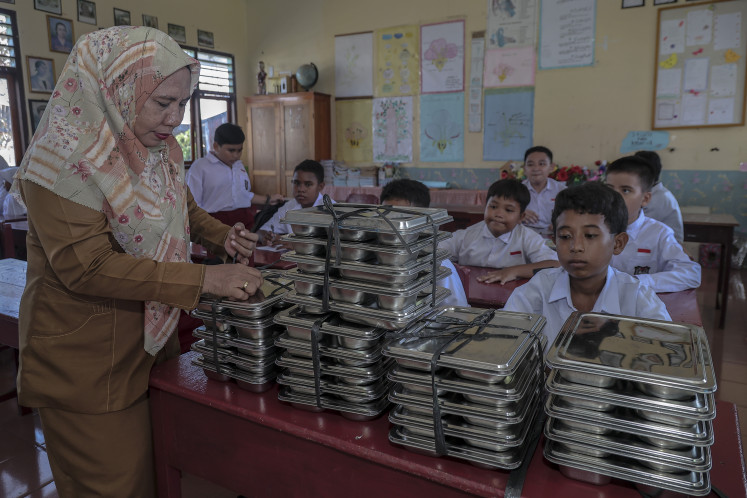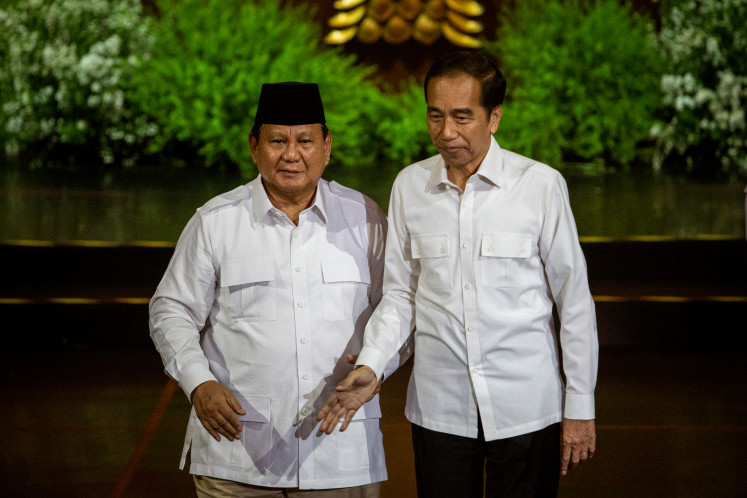Popular Reads
Top Results
Can't find what you're looking for?
View all search resultsPopular Reads
Top Results
Can't find what you're looking for?
View all search resultsWhere does our drinking water come from? A trip to Aqua's Lido factory finds out
If you drink Aqua-branded mineral water, it's likely that you've drunk water that comes from the company's facility in Lido, West Java.
Change text size
Gift Premium Articles
to Anyone
E
ver wondered why bottled mineral water tastes a certain way? You've heard friends and family tout one brand as sweet, another slightly bitter and tart, and some won't drink anything but a single brand.
The flavor isn't a figment of your imagination, and actually depends on the types and amount of minerals that are in the water. Our taste buds sense the flavor, and it’s natural for some people to taste nothing at all.
The flavor of bottled mineral water was among the topics discussed on Nov. 28 during The Jakarta Post’s visit to a spring water facility in Lido, West Java. It is the main source of water for Aqua, one of Indonesia’s largest drinking water companies.
Read also: Aqua, Rinaldy Yunardi team up for latest limited edition bottles
Built around 46 years ago, Aqua's Lido facility supplies water to the company’s bottling factories in other areas, including its factories in Bekasi and Sentul, also in West Java.
To reach the spring water facility, visitors descend a concrete path past a giant tank. With a storage capacity of 300,000 liters, the natural spring water is drawn up into the giant tank where it is stored before the water is pumped into tank trucks for transporting to the bottling factories.
Aqua draws its water from three of five springs in Lido, named Source 1, 4 and 5. Said to be located closest to the giant tank, Source 5 is 50 meters deep and has a volume flow rate of 18 liters per second.
The spring is secured in a hygienic cylinder covered with glass that resembles a hut, and visitors are required to take off their shoes before entering.
A hut-like structure houses Source 5, one of the springs that supplies natural water to Aqua. The spring is 50 meters deep and has a flow rate of 18 liters per second. (JP/Wienda Parwitasari)Source 4 supplies water to the villages of Ciburuy and Cigombong.
“There are 400 families in Ciburuy village, while Cigombong village has 500 families. They can use the water from us, and it’s part of our social responsibility [program],” said Wawan, Aqua's corporate social responsibility (CSR) coordinator. He added that a water meter had been installed at each house to provide equal access to the water supply.
“We’ve formed a kelompok pengelola sarana air bersih [KPSAB], and it charges each family Rp 1,500 (11 US cents) per cubic meter [of water],” said Wawan.
The members of the KPSAB – or clean water management group – come from the two villages, and it is non-profit. The fee isn't for Aqua, “It’s for maintenance and for the group,” said Wawan, who added that the company also paid the electricity and tax for the villages' water supply.
The sustainability of the spring is heavily dependent on catchment areas, especially in the mountains.
One of Aqua’s water conservation areas is in Pancawati village, West Java. In collaboration with the local Yayasan Gamelina, the company runs a number of conservation activities, such as sumur resapan (wells for collecting rainwater), rorak (water traps), biopore infiltration holes and tree planting.
The head of Yayasan Gamelina, Dangdang Mulyadi (seated), demonstrates the simple steps for trapping water using a 'rorak' on Nov. 28, 2019 at the Aqua conservation area in Pancawati, Bogor, West Java. (JP/Wienda Parwitasari)Lecturer Nana Mulyana of the Bogor Agricultural University (IPB) is partnering with Aqua in conserving water, and said the spring water that the company used dated back 2,000 to 3,000 years.
“So it’s not from rainwater that fell recently,” said Nana, adding that it took hundreds of years for water to be absorbed into the ground and become a spring.
Forests have a crucial role in maintaining groundwater for future use. The roots of trees allow water to penetrate deeper into the ground, so cutting down trees disrupt the balance.
Nana added that Aqua and the local communities had targeted groundwater recharge – the absorption of rainwater into the ground – of 57 liters per second within the next decade. (wng)
__________
Editor's note:
The Jakarta Post was invited by Aqua to visit its spring water facility in Lido, West Java.

